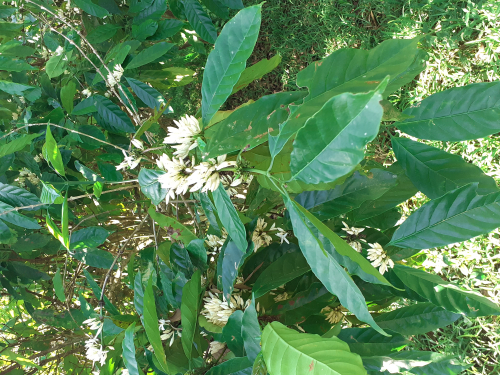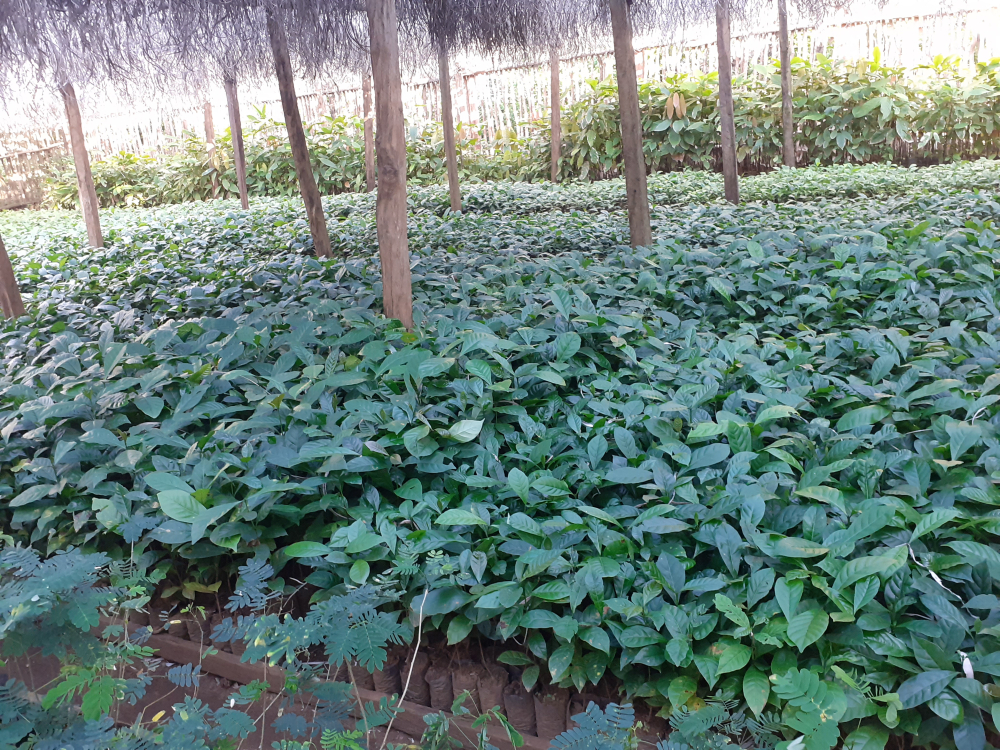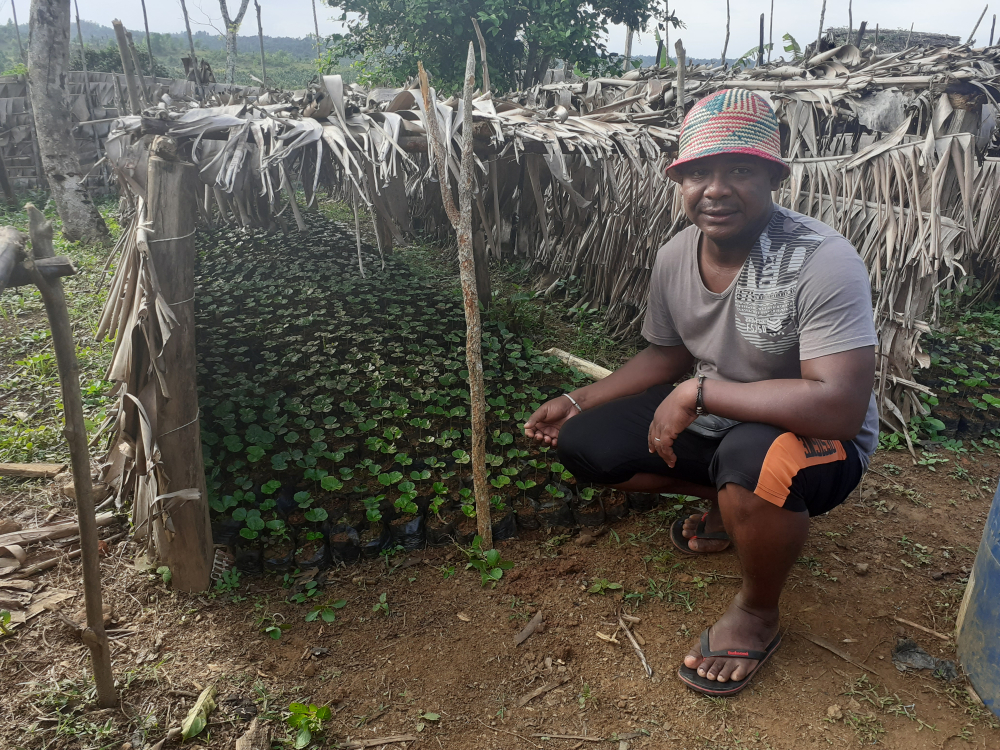Madagascar
Did you know?
About
Madagascar: An island of extraordinary biodiversity and captivating culture.
Madagascar, along with its surrounding islets, is situated off the eastern coast of southern Africa. This island nation, the fourth largest globally, features a predominantly high plateau. Coastal plains flank the east, while a scrubby plain stretches westward. The climate is tropical, with heavy rainfall concentrated in the north and east. The majority of the population resides on the central plateau.
Key exports include agricultural products like coffee, vanilla, cloves, litchees, and sugar, as well as seafood like shrimp. Major industries encompass agricultural processing, textile manufacturing, oil refining, and mining, particularly of chromite. Tourism and foreign aid play significant roles in the country's economy.
Mainly Robusta
The current coffee situation in Madagascar has to be historically explained by different events that occurred in the past. The first coffee in Madagascar was grown by foreigner exporters, most of them French, on their own plantations. After the 'revolution' and independence declaration, the state decided to redistribute land to the Madagascarian growers. With as a consequence, the splitting of the foreigners' plantations. Nowadays, only a few of those plantations survive.
This is why you find in Madagascar such a enormous number of small growers. In order to get the coffee exported you have to go through a process of 'collection'. This tree-structure system is rather simple but has many consequences. The grower exchanges his coffee for other goods (mainly rice) in the local shop. The shopkeepers do the same with bigger ones, who again exchange coffee with a wholesaler, and this goes on till it reaches the exporter. For the grower it is important to get as much rice as possible for his coffee otherwise he will leave the coffee and exchange something more valuable. Goods are exchanged basically to feed the family and not to 'invest' on the farm, which is not improving the condition of the farms.

Another point is that Madagascar is supplying a lot of other spices grown naturally in the bush which makes the Madagascarians more pickers than growers !
Last but not least, the effect of all this is reflected in the bean size/quality. Not so long ago the export of grade 1 was around the 60% of the global volume, with 25% of grade 2, 10% of grade 3. Nowadays, the estimates are 60/70% for grade 2 and 10/15% for grade 1 and 3.
Nice to know
Madagascar boasts the richest genetic diversity of coffee anywhere on Earth. The recent discovery of six previously unknown coffee species in the northern part of the country underscores this remarkable fact. Now, an astounding half of the world's 130 recognized coffee species call Madagascar home.
A significant number of these wild coffee species are naturally low in caffeine or even caffeine-free. While commercial cultivation of these species is unlikely, their scientific study holds immense value. Researching these unique varieties can provide crucial insights for improving current commercial coffee species, particularly in adapting them to the challenges of our changing climate.
Special thanks to
* With special thanks to Jean-Christophe Galland of Madagascar Coffee Company.
Coffee facts
Crop Periods

Flowering Period |
Main: from November until February |

Harvest Period |
Main: from April until June |
Shipping Period |
Main: from August until December (*) |
(*) The first shipment of Madagascar comes form the northwest region Ambanja where coffee is brought in cherries to the exporters. The coffee is then immediately processed and shipped out of the country from Nosy Be. From the east coast the shipments are slightly later. For this whole region the coffee is first processed in the highlands bush which takes more time. July and August are the storm months which of course influence the flow of coffee significantly, mainly in the east part of this big island. If late August shipments are sometimes available, it is not always in favour of quality. Indeed at that period of the year the surrounding humidity level is very high causing problems to dry the coffee. The humidity content of the shipped coffee has to be checked carefully upon arrival of the vessel.
Transit days
|
Port of Shipment |
Imp. |
EU |
US |
|
Tamatave (Toamasina) |
20% |
32 |
48 |
|
Nosy Be (1) |
20% |
32 |
48 |
|
Diego Suarez |
10% |
37 |
52 |
|
Antalaha |
10% |
37 |
52 |
|
Manakara (2) |
35% |
37 |
52 |
|
Manajary (3) |
5% |
37 |
52 |
(1) Port Nosy Be
Nosy Be is a small island in the northwest part of Madagascar. The coffee is feedered in sealed containers from Ambanja on the main island to Nosy Be where it stays in a container park till the arrival of the main vessel. Nosy Be and Tamatave (Toamasina) are considered to be the only main ports. All others are secondary ones.
(2) Port Manakara
The coffee is loaded manually upon barges in a so called 'port' area. Once the barge is ready, it is feedered to the open sea where a vessel is anchored. The loading of the vessel takes place manually on the water which makes it very difficult. During stormy weather, this sometimes leads to accidents. Furthermore, these waters are infested with sharks!
(3) Port Manajary
The loading can be done in two different ways. The first one is in open sea via barges (see loading in Manakara). The second one via an area situated nearby a channel. This area has been financed by the International community and provided with a splendid container elevator which has unfortunately enough never been used! The loading of the container on the barge is done manually, to be then feedered to the main vessel waiting in sea.
Countries of Export
1. France
2. Germany
3. Italy, Algeria, Belgium, Europe
Export figures by countries:
90% is shipped to Europe (France, Belgium, Germany, The Netherlands, Italy and Spain), the balance to the United States and Northern Africa. Nevertheless good volumes are rerouted from western Europe to central Europe.
ICO Figures
Nice to know
According to the International Coffee Organization (ICO), Madagascar ranks as the 23rd largest coffee producer globally. Production has significantly declined, with 2020 output reaching 366,000 bag60, down from 380,000 bags in 2019. This pales in comparison to the peak production period of the late 80s and early 90s, when annual output exceeded one million bags.
Classifications
Varieties
The Kouilou botanical variety is the most frequently grown. Even if the Robusta is the main quality exported, Madagascar has a very small crop of about 100 mt of Arabica. This unwashed Arabica can be considered as very good. Furthermore, a small portion of this Arabica is certified Organic (Bio).

By altitude
Coffee trees thrive in the highlands (which is rare at those latitudes) and are cultivated under agroforestry cover. The coffee-producing areas thus constitute lungs of greenery on the highlands of the heavily deforested plateaus.
But also on the southeast coast, from Mananjary to Farafangana, you,'ll find the Kouillou variety (most culivated). Canephora coffee trees are grown in diversified agroforestry systems, often from former colonial plantations. Canephoras grown in Madagascar offer a sweet and slightly spicy cup.
By region
In the past the screen 18+ was coming from the southern region as Manakara, Mananjary, Farafangana, ... where you could find plantations. Nowadays the main regions are :
- Itasy Region
- Amoron'i Mania
- Haute Matsiatra
Amoron'i Mania
In the heart of Madagascar lies the Amoron'i Mania region, where coffee is grown in the rolling hills, at altitudes between 1200 and 1600 meters. Arabica was introduced at the beginning of the twentieth century in the region, however, the production of Arabica is still confidential.
The coffee plantations are partly located in the Zafimaniry country, an ethnic group renowned for its "woodworking know-how", which was inscribed in 2008 on the UNESCO list of the Intangible Cultural Heritage of Humanity.
Altitude: 1200 to 1600 m
Arabica variety: Red and yellow Bourbon & Caturra
Soil type: clay and sandy
160 producers
Haute Matsiatra Region
The Haute Matsiatra region, located in the South-Central Highlands of Madagascar, is a region steeped in history and natural beauty. This region has a long history with coffee, its production dates back to the early twentieth century and was a major cash crop at the time. Today, there are still a few production areas where the traditional Bourbon variety has been preserved.
Coffee is grown at altitudes between 1300 and 1700 meters, the cooler climate and the clay-rich soils contribute to the development of beans of exceptional acidity and complexity.
Altitude: 1300 - 1700 meters
Arabica variety: Arabica, red and yellow Bourbon
Soil type: Clayey, silty
250 producers
Itasy Region
Nestled in the central highlands, the Itasy region is renowned for its microclimate ideal for growing Arabicas. The red Bourbon variety was introduced by the French in the nineteenth century and has been preserved until today. It currently makes up more than 90% of the orchard.
With its very rich volcanic soil and a unique varietal heritage, the Itasy region is a coffee terroir with high potential.
Altitude: 1200 to 1500 m
Arabica varieties: Red and yellow Bourbon
Soil type: volcanic
200 producers
By screensize
The screening is done in accordance with the ICO regulations which are still in place in Madagascar. The number of defects by grades and the defects can be found in those rules.
| Grade 1 18/20 | screen 18+ |
| Grade 1 | screen 16 |
| Grade 2 | screen 14 |
| Grade 3 | screen 12 |
| Grade 4 | screen 10 |
By defects
Defect classification exists but is not commonly used. Madagascar produces some Arabicas which are mainly sold on stocklot basis.
Defect counting is done per 300 gr of representative sample of the graded coffee
| Extra Prima | 0 to 15 defects max. 5 broken beans |
| Prima | 15 to 30 defects max. 5 broken beans |
| Superior | 30 to 60 defects max. 10 broken beans |
| Standard | 30 to 120 defects max. 25 broken beans |
| Limit | 120 to 240 defects max. 40 broken beans |
| Triage | Should be the same botanical species max. 2% foreign matter, parchment and shells max. 10% broken beans and shells max. 10% of whole and fair beans. |
| Brisure | |
| Below standard | |
| Black beans |
Typical Description
Madagascar Robusta Grade 2
Processing
Picking (1) | Manually |
Washing | None |
Fermentation | None |
Drying | Natural (Sun) |
Sorting | Mechanical + hand (removing blacks) |
(1) About Picking
In the Abanja region the coffee arrives in ripe cherries and stocked as such. The whole processing for that region includes sun drying, depulping, mechanical screen sorting and sometimes polishing.
In the eastern part of Madagascar, the coffee growing areas are less accessible. All the depulping processing is done in the highland bush and is then packed. The depulped unscreened coffee (called locally 'tout-venant') is carried by people to more accessible places where pick-ups of exporters or wholesalers are able to load. Therefore the exporters buy the coffee already in parch (out of its cherry but with its light white skin). The processing consists mainly of mechanical screen sorting and sometimes polishing.

Coffee Environment
About Exporters
The coffee sectors in Madagascar had a major economic importance during the colonial era and then after independence. In the 90s, the high volatility of international market prices and the ageing of plantations caused a serious crisis in the sector with a significant drop in prices for farmers. Many producers then decided to replace their coffee plantations with cocoa, vanilla, clove, pepper or pink peppercorn plants. National production has fallen from around 80,000 tons at the end of the 90s to less than 20,000 tons in 2023, including 200 tons of Arabica. The local market, which is very dynamic, absorbs all production and now offers farmers attractive prices that motivate them to reinvest in the sectors.
Coffee production is largely dominated by small planters who own 0.15 to 1 ha. The plantations are often more than 50 years old and are left without maintenance or fertilization. Yields are therefore very low. Cherry coffee is usually harvested green (to meet the immediate needs of families), then it is dried and shelled individually by the farmers. No care is taken with quality, as purchase prices are not differentiated on the local market.

Forestation
Faced with this situation, the Malagasy government, with the support of international donors, has decided to set up an action plan to revive the Arabica and Robusta sectors, participate in the reforestation of the Highlands by setting up diversified agroforestry systems, strengthen producer organizations, improve the quality of coffee exported to the international market and structure the sectors in collaboration with the private sector.

